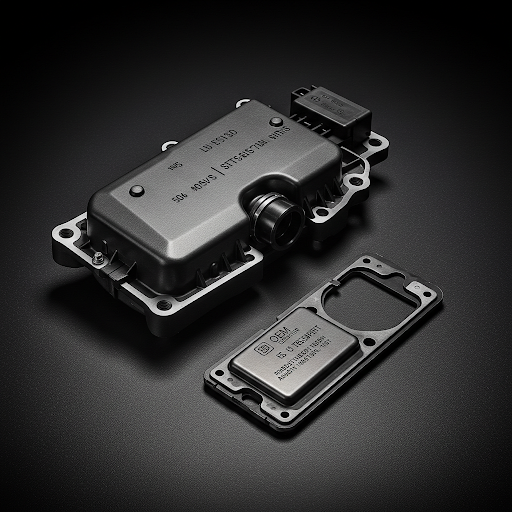
We offer you a choice between “OEM” and “aftermarket” parts for repairs. And we want you to fully understand that choice. Most people assume that OEM is better. That’s often the case, but not always. It’s also not just a matter of price and branding.
Exactly What Are They?
The real distinction is a matter of who makes them, not necessarily that of quality or “best fit.”
OEM refers to “original equipment manufacturer.” That is, they’re made by the same company makes that part for the car manufacturer to use on the assembly line. So they’re exactly like what was originally installed.
Aftermarket parts are made by any of a number (often a large number) of different companies. They’re kind of like the generic of a prescription medicine. Ideally there’s only minor differences and they’ll function the same and last just as long.
Finally, aftermarket parts are not the same used, refurbished, or rebuilt!
Pros and Cons of OEM
Dealerships use only OEM parts, and that’s one reason why they’re generally more expensive than local garages. But 80% of independent shops use aftermarket parts for repairs. So which should you choose? Here are the pluses and minuses, in no particular order.
OEM
- More expensive. One factor in the price premium is that parts and service departments are often burdened to increase the dealership’s profit.
- Known to be good quality, known to fit and function exactly like original .
- No multiple manufacturers to assess and choose between. But limited availability.
- Usually a 1 year warranty.
- Rarely counterfeit.
- May be required for warranty.
- Some OEM parts have known problems!
- Aftermarket may not yet be available for the newest models
After Market
- Less expensive, but usually equal quality.
- Can be even better quality, with problems corrected and improvements made over time.
- But they can be of lesser quality, with weaker materials and design short-cuts. You get what you pay for, but most manufacturers recognize quality as competitive advantage As with everything, be wary of anything unusually cheap.
- High-performance options and special features may be available.
- They’re often designed to be compatible with many makes and models, so they may not be perfectly matched to one particular vehicle.
- Reputable companies’ parts pass safety requirements, just like OEM.
- Sometimes have longer warranty.
- There can be an overwhelming number of choices to sort through.
- They may be the only type of part still available for older vehicles.
In Brief
In brief, all OEM parts are created equal. Aftermarket not so equal. So it’s important to consider brand reputation and warranty in addition to price. Most people lean towards OEM for new in-warranty vehicles, aftermarket for older vehicles. At Pacific Automotive we know the quality aftermaket brands (such as NAPA and others) as well as OEM sources for most auto makers.
With us you’ll benefit from expert diagnosis and complete maintenance that’s always up to date with factory information. That includes steering and suspensions, wheelchair lifts, lift gates, and automatic doors. Plus a 2 year / 24,000 mile nationwide warranty. Our experience and expertise covers sedans, light trucks, vans, and shuttle buses, including Ford Transit and Transit Connect, Mercedes-Benz Sprinter, and Nissan NV vehicles.
We’ve implemented precautions in accordance with guidelines from the World Health Organization (WHO) and Centers for Disease Control and Prevention (CDC),
Our ASE certified technicians and master mechanics work with the latest diagnostic equipment. We guarantee all our work. And we are open to serve you!
